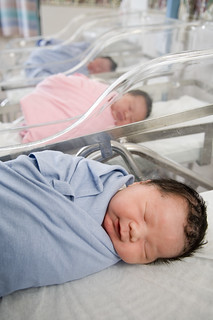LOW LOCAL BIRTH RATES AND LONGER LIFE EXPECTANCIES
As our post-war Baby Boomers turn 65 years old from 2012 onwards, Singapore will experience an unprecedented age shift. Over 900,000 Baby Boomers, more than a quarter of the current citizen population, will retire from the workforce and enter their silver years. At current birth rates and without immigration, the median age of our citizens will rise to 47 in 2030 from 39 in 2011.
As is the case in other developed East Asian urbanised societies like Japan, Taiwan and Hong Kong, our declining birth rates are due to rising singlehood, later marriages, and married couples having fewer children. Broader social and economic factors also affect marriage and parenthood decisions. For example, the expansion of higher education opportunities while welcome, has also delayed entry into the workforce and family formation.
Singapore’s life expectancy has increased by 10 years over the last 3 decades: from 72 years in 1980 to 82 years in 2010. Our life expectancy is one of the highest in the world. With increasing life expectancy and low birth rates, we face the prospect of a shrinking and ageing citizen population and workforce.
A SHRINKING AND AGEING POPULATION AND WORKFORCE
At current birth rates and without immigration, our citizen population will begin to shrink around 2025.
The number of elderly citizens will triple to 900,000 by 2030, and they will be supported by a smaller base of working-age citizens. There are currently about 6.3 citizens in the working-ages of 20 to 64 years, for each citizen aged 65 and above. By 2030, there will only be 2.1 working-age citizens for each citizen aged 65 and above.
| Year | Elderly Citizen | Citizens in working-age band of 20-64 years of age |
|---|---|---|
| Declining Old-Age Support Ratio | ||
| Source: Department of Statistics | ||
| 1970 | 1 | 13.5 |
| 2000 | 1 | 8.4 |
| 2011 | 1 | 6.3 |
| 2015 | 1 | 4.8 |
| 2020 | 1 | 3.6 |
| 2025 | 1 | 2.6 |
| 2030 | 1 | 2.1 |
As more citizens retire and with fewer entering the working-age band, the number of working-age citizens will start to shrink by around 2020.
We will feel the impact of this in many ways. We will see a reversal of what is the typical family structure. Today, we generally have a few elderly members of the family with a larger number in the younger generations. By 2030, this family structure is likely to reverse itself with more elderly members than younger ones, as we live longer and each successive generation becomes smaller.
For society as a whole, a declining old-age support ratio points towards an increasing tax and economic burden on our working-age population. A shrinking and ageing population could also mean a less vibrant and innovative economy. There will be a shrinking customer base in Singapore, and companies may not be able to find adequate manpower. Multinational companies may therefore choose not to set up operations in Singapore, and Singapore-based businesses may down-size, close down or relocate. As a result, we could see slower business activity and fewer career options that will match the higher aspirations of Singaporeans. With an increasingly educated and mobile population, more of our young people could choose to leave for other exciting global cities, hollowing out our population and workforce, and worsening our old-age support ratio.


No comments:
Post a Comment